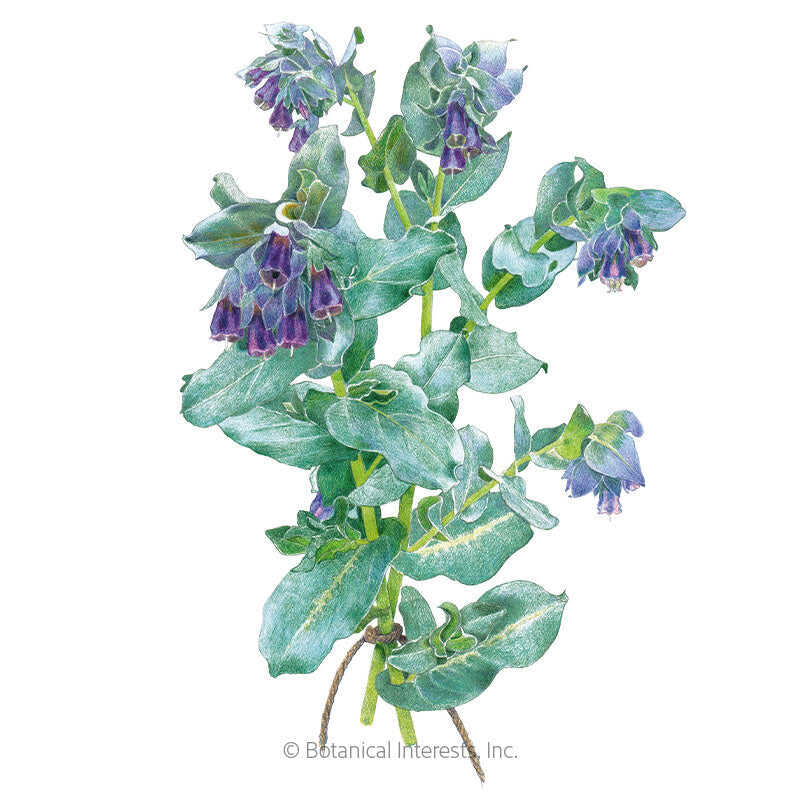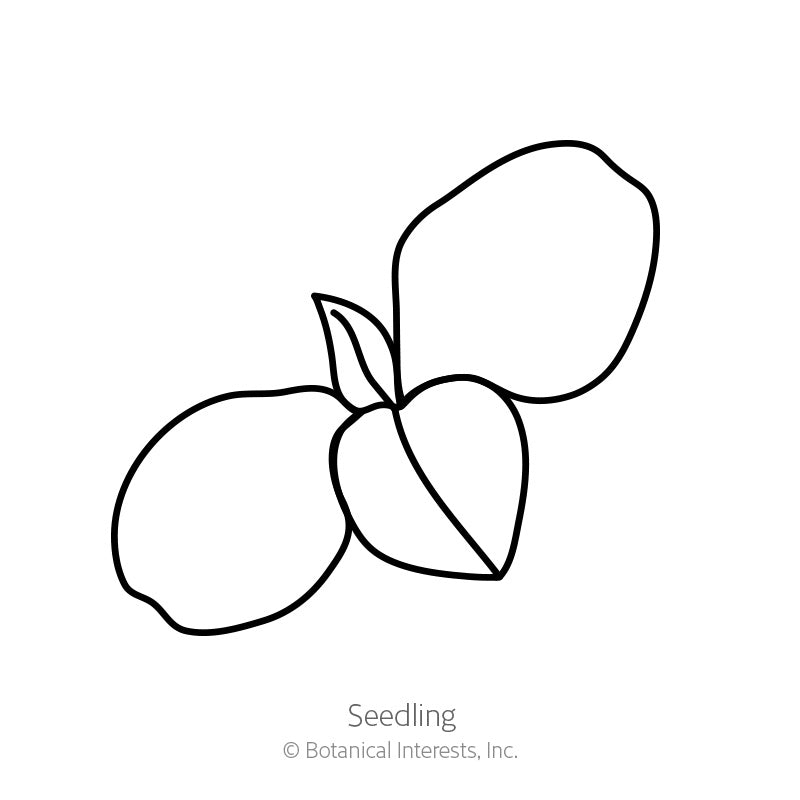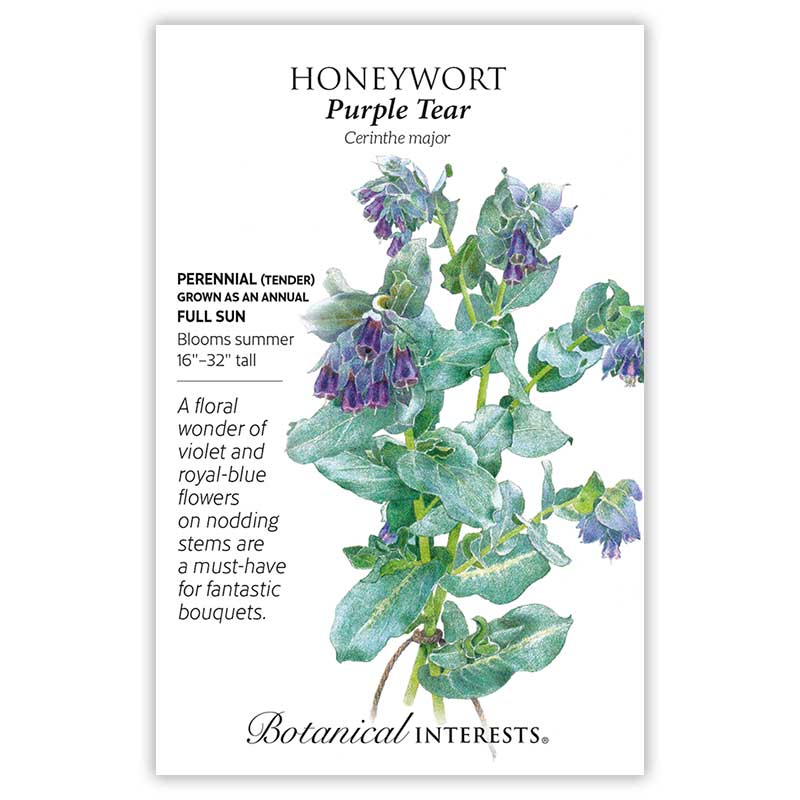


- Variety Info
- Sowing Info
- Growing Info
- Learn More
Variety Info
Family: Boraginaceae
Native: Mediterranean region
Hardiness: Perennial in USDA zones 8 and warmer; often grown as an annual
Exposure: Full sun
Bloom Period: Summer
Plant Dimensions: 16"–32" tall
Variety Info: 1" brilliant violet flowers surrounded by rich-blue bracts that get deeper in color with cooler nights toward the end of the season.
Attributes: Attracts Hummingbirds, Attracts Pollinators, Cut Flower, Deer Resistant, Drought Tolerant, Heat Tolerant

Sowing Info
When to Sow Outside: 2 to 4 weeks after your average last frost date. Succession sow after a month for continual bloom.
When to Start Inside: RECOMMENDED. 4 to 6 weeks before your average last frost date.
Days to Emerge: 7 – 21 days
Seed Depth: ¼"
Seed Spacing: A group of 3 seeds every 12" — 18"
Thinning: When 3" tall, thin to 1 every 12" — 18"
Your hardiness zone is
Growing Info
Special Care: Honeywort is tough, but may look a little tired after transplanting. Don't worry, plants will perk up in a week or two once they have established roots in their new space. Deadheading (cutting spent blooms) promotes another flush of flowers. Honeywort may reseed; remove spent flowers and seed heads if this is not desired. For long-lasting cut flowers, cut in the morning, and don't fret when cuttings appear to wilt; dip the bottom of the stem in boiling water for 10 to 20 seconds and flowers will perk up in a vase of cool to warm water.




